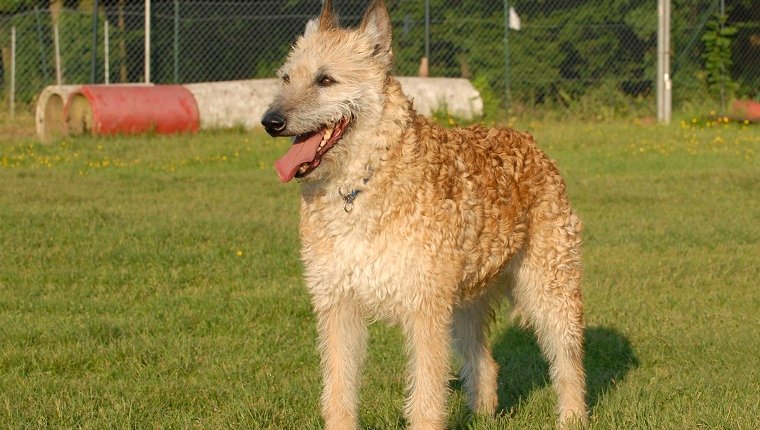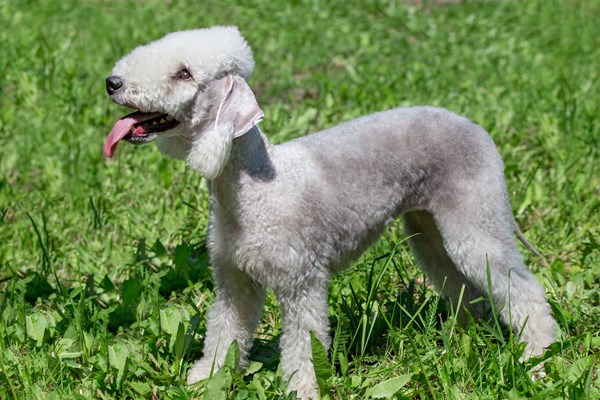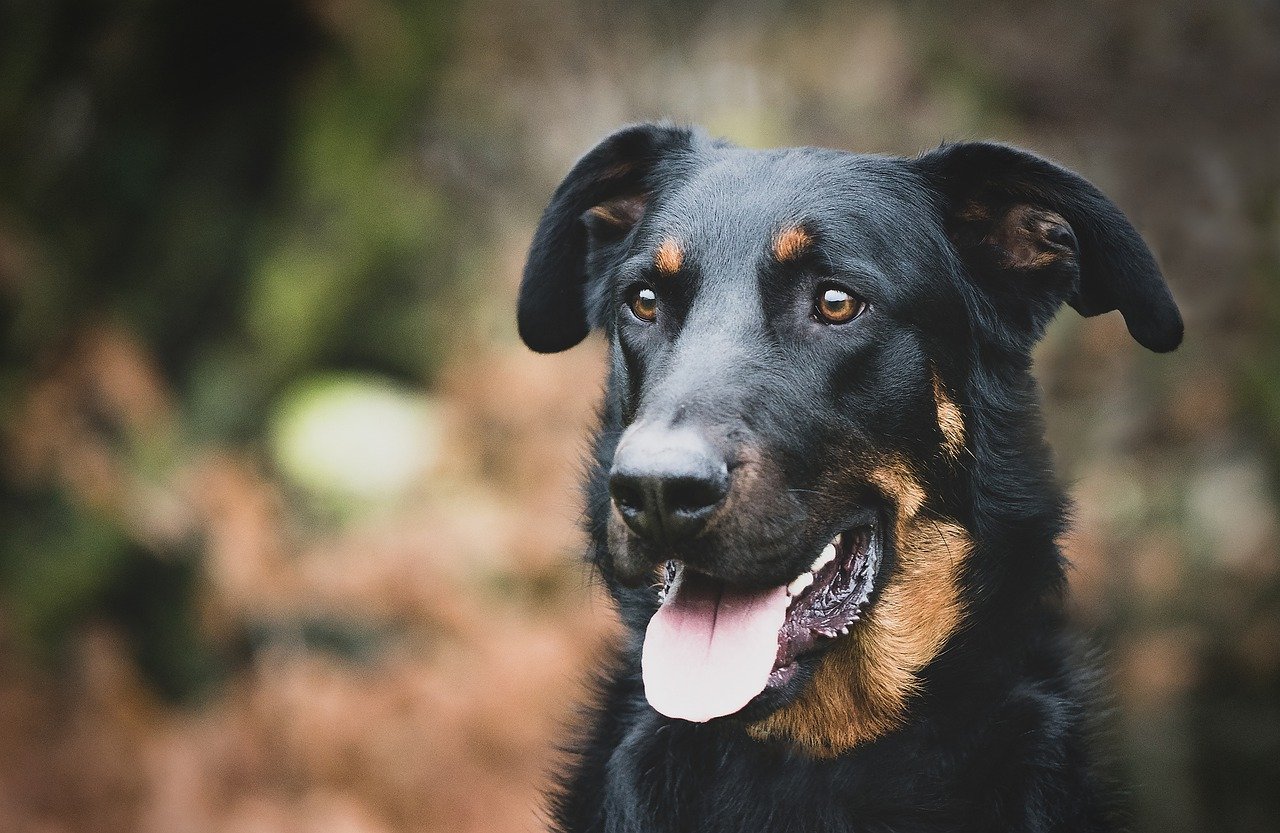The Australian Retriever Dog Overview
The Australian Retriever is a mixed-breed dog, not a purebred. It is the offspring of an Australian Shepherd and a Golden Retriever.
The easiest approach to assess a mixed breed’s temperament is to research all of the breeds involved and understand that any combination of the features seen in either breed is possible.
Not all of these designer hybrid dogs being bred are 50/50 purebred. Breeders frequently breed multigenerational crosses.
Australian Retriever Highlights
- Australian Retrievers are a breed of dog that is a cross between two different breeds. They are not purebreds like their parents, the Australian Shepherd and Golden Retriever.
- The Australian Retriever’s coat comes in three primary colors: black, brown, and white. Some are more golden in color, similar to their Retriever father. It is usual for each dog to have a unique combination of colors and markings.
- When it comes to grooming, you’ll want to brush the dog’s coat twice or three times a week—this will help prevent matting, which can result in an expensive visit to the veterinarian or groomer.
- The Australian Retriever is a highly active and lively dog that requires approximately an hour of exercise daily. This should ideally be divided into two distinct sessions.
- The Australian Retriever is an excellent choice for families with children. Both children and canines form strong bonds. You should continue to oversee all interactions between children and pets.
- Australian Retrievers are generally tolerant of other family pets, though they do exhibit herding characteristics.
- The mixed breed can be an excellent watchdog—although they are not well-known for their barking.
Australian Retriever Breed Features & Ratings:
Rated base on a 5 Star Scale
ENERGY LEVEL: 5 Star
EXERCISE REQUIREMENTS: 4 Star
PLAYFULNESS: 5 Star
AFFECTION LEVEL: 4 Star
FRIENDLINESS TO DOGS: 3 Star
FRIENDLINESS TO OTHER PETS: 5 Star
FRIENDLINESS TO STRANGERS: 3 Star
WATCHFULNESS: 5 Star
EASE OF TRAINING: 4 Star
GROOMING REQUIREMENTS: 2 Star
HEAT SENSITIVITY: 4 Star
VOCALITY 5 Star
Australian Retriever Characteristics:

- Dog Breed Group: Working Dogs
- Height: 19 to 23 inches
- Weight: 25 to 60 pounds
- Life Span: 12 to 15 years
- Type: Crossbreed
- AREA OF ORIGIN: United States
- DATE OF ORIGIN: 2007
- OTHER NAMES: Aussie Shepherd, Australian Sheepdog, Australischer Schaferhund
- Temperament: Intelligent, Loyal
- Activities: Agility, Obedience, Fetching
- Color: Black, Brindle, Brown, Golden, Merle, Speckled, Spotted, White, Blonde and various combinations
- Litter Size: 6 to 9 puppies
- Puppy Prices: As puppies, golden Aussies often cost between $700 and $1,000.
Australian Retriever Health:
Australian Retrievers are usually considered to be healthy dogs, yet they are susceptible to some of the same health problems as the Australian Shepherd and Golden Retriever.
As is always the case, it is critical to arrange routine wellness checks with your dog’s veterinarian.
Several of the most prevalent health problems encountered by Australian Retrievers include the following:
- Bloat
- Cataracts
- Hip Dysplasia
Australian Retriever Grooming:
The Australian Retriever’s coat comes in three primary colors: black, brown, and white. Some are more golden in color, similar to their Retriever father. It is usual for each dog to have a unique combination of colors and markings.
The coat of a mixed breed is typically described as wavy and coarse to the touch. When it comes to grooming, you’ll want to brush the dog’s coat twice or three times a week—this will help prevent matting, which can result in an expensive visit to the veterinarian or groomer.
In terms of environment, the Australian Retriever is a very versatile breed that thrives in a wide variety of situations.
However, remember to dress your dog in a dog coat when the temperature drops below freezing, and to always provide ample shade and fresh water when the weather rises.
Australian Retriever Exercise:
It is critical to begin teaching and socializing the dogs as soon as possible. Utilize positive reinforcement techniques, commend it, offer snacks as an incentive, and encourage it.
Because the dog requires a leader, the owner must be forceful and in control.
Certain breeds of dogs may be timid and shy, and it is prudent to avoid breeding them or to socialize them during puppyhood to balance this out.
Australian Retriever Training:
Daily training of an hour or two is required, and it will joyfully accompany its owner on hikes, jogs, and other activities. In its play area, it must have a yard with suitable fencing or a dog park.
Assure that the puppies are not over-exercised, as their developing skeleton requires special attention. Avoid rough surfaces for puppies under the age of a year.
Australian Retriever Food and Nutrition:
The optimal Australian Retriever diet should be designed for a large, energetic dog.
Australian Retrievers require a balanced diet because excessive eating can result in weight gain and associated health problems, particularly if appropriate activity is not provided.
As with all dogs, the Australian Retriever’s nutritional requirements fluctuate as they mature into adulthood and continue to do so into their senior years.
You should consult your veterinarian on your Australian Retriever’s food, as there is just too much variety between individual dogs in terms of weight, energy, and health to provide a specific recommendation.
Australian Retriever Temperament and Personality:
Almost immediately, you’ll discover that your Australian Retriever is an extremely loving dog who is constantly on the lookout for human companionship.
The dog will form an immediate and strong attachment with you and your children and will yearn to be an integral part of your everyday life.
If your family is active, it is fantastic! This mixed breed will benefit from plenty of active exercise and playing, as well as frequent training sessions to help boost their innate intelligence.
However, Australian Retrievers have a history of possessive behavior, so you’ll need to establish boundaries early and be prepared to devote to socializing the dog from the outset.
For the same reason, you’ll need to keep a close eye on your Australian Retriever when they meet new canines or youngsters. The mixed breed can be an excellent watchdog—although they are not well-known for their barking.
Australian Retriever Care/Upkeep:
The Australian Retriever is a highly active and lively dog that requires approximately an hour of exercise daily. This should ideally be divided into two distinct sessions.
When out and about, your Australian Retriever will thrive in safe off-leash environments, particularly if they have the opportunity to go for long runs or swim. In an ideal world, the dog would live in a situation with a fenced-in yard.
Additionally, it is critical to incorporate fetch and retrieve games into the daily training program of this mixed breed.
Along with activity requirements, you’ll want to inspect your Australian Retriever’s paw pads for symptoms of any damage sustained while outdoors. Additionally, clip the dog’s nails—your veterinarian may prescribe the optimum method and frequency.
Additionally, you’ll need to brush the Australian Retriever’s teeth on a regular basis—again, your veterinarian may recommend acceptable toothpaste brands and techniques. Finally, inspect the breed’s ears for signs of infection or dirt buildup.
Australian Retriever Relationship with Children and Other Pets
The Australian Retriever is an excellent choice for families with children.
Both children and canines form deep bonds—although, due to the breed’s territorial instincts, it’s critical to ensure that both parties receive proper socialization during their early years.
Australian Retrievers are generally tolerant of other family pets, though they do exhibit herding characteristics. Therefore, ensure that suitable boundaries between the dog and existing household pets are established.
Finally, early socialization is critical for this mixed breed. When you bring your Australian Retriever home to your family, be careful to reward them for excellent behavior and to follow a suitable training routine.
Australian Retriever Names
| Rank | Boy Names | Girl Names |
| 01 | Rocky | Lucy |
| 02 | Max | Lola |
| 03 | Bear | Molly |
| 04 | Buddy | Lulu |
| 05 | Tucker | Zoey |
| 06 | Rocky | Maggie |
| 07 | Oliver | Roxy |
| 08 | Duke | Chloe |
| 09 | Marley | Luna |
| 10 | Oliver | Stella |
All About Australian Retriever
Australian Retrievers are highly clever, loyal, and affectionate dogs. They are vivacious, affectionate, and playful, but they may be highly possessive of their possessions and family.
While they get along well with other animals and children, their possessive nature may need to be managed when youngsters are present.
While Australian Retrievers are not known for their excessive barking, they make excellent watchdogs and are quite easy to teach. It is always advisable to begin teaching a dog as soon as possible, but some breeds are especially sensitive.
They do have herding characteristics due to their Australian Shepherd pedigree, but make excellent household pets. Due to their Golden Retriever inclinations for retrieving, the best games to train them with will be those that involve balls or frisbees.
Given that the Australian Retriever is a cross between an Australian Shepherd and a Golden Retriever, they will have a temperament that is pretty similar. Due to the high energy level of Australian Retrievers, they will require daily exercise, preferably twice a day.
Both parent breeds require considerable activity, and the Australian Retriever will be no different. To avoid boredom and any destructive behavior, take your dog for a walk or exercise for at least 30 to 60 minutes each day.
While ball games and frisbee are excellent ways to keep the dog active and stimulated, ensure that the dog is off the leash in a safe, contained location.
These breeds thrive in homes with a large fenced-in yard that allows them to run freely. Australian Retrievers thrive in both hot and cold climes.
Australian Retriever History:
The Australian Retriever is a relatively recent designer dog breed that is said to have arisen over the 2007 Christmas season. As demand for these mixed breed dogs increased, breeders continued to manufacture them.
Returning to the parent breeds, the Golden Retriever was developed in Scotland and immediately gained popularity due to its high intellect and excellent ability to perform agility and obedience exercises.
The Australian Shepherd is a breed that originated in the United States. Initially, the breed earned a stellar reputation as a working dog, and they are frequently used as guiding dogs today.
Where to Adopt Australian Retriever:
Due to the mixed breed status of Australian Retrievers, it may be difficult to locate a breed-specific rescue.
However, you may like to contact Australian Shepherd or Golden Retriever breed-specific rescue organizations, as they frequently accept mixed breeds.
Listed here are some possible rescues:
- Aussie And Me Animal Rescue
- As Good as Gold
More Dog Breeds and Further Research:
If you want a similar breed, consider taking time in reading about these:
Australian Retriever Fun Facts:
- Australian Retrievers are mixed breed dogs.
- The Australian Retriever is a great fit with kids.
- The Australian Retriever looks like the perfect mix of the Australian Shepherd and the Golden Retriever.
- The Golden Retriever Australian Shepherd mix gets along with everyone.
Frequently Asked Questions (FAQs):
While they are not known to bark a lot, Australian Retrievers make good watchdogs and are very easy to train.
13 – 15 years




